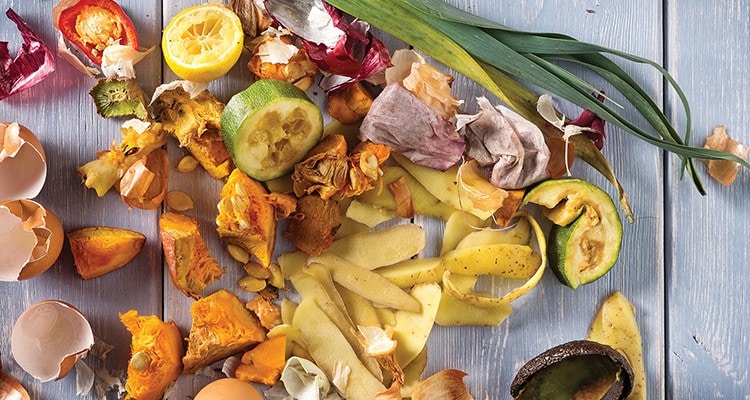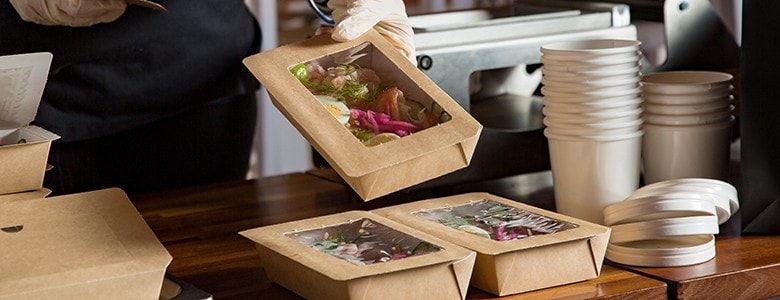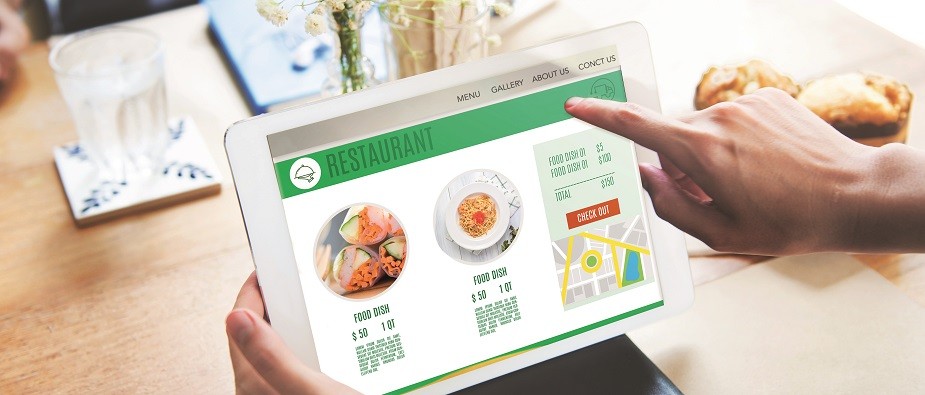Sustainability in restaurants has been a rising trend in the F&B industry. As consumers become increasingly aware of the devastating impacts of climate change, more are choosing to live and eat more sustainably1.
What does sustainability mean for restaurants? Restaurant sustainability is the practice of being socially responsible and minimising their environmental impact on the planet.
Whether a restaurant is labelled sustainable or not can affect where diners choose to patronise. Therefore, restaurants must be willing to go sustainable — not only will it improve customer loyalty2 and attract sustainability-minded diners, but you’ll also be doing your part for the environment.
If you’re looking to make your business more eco-friendly, get started with these five sustainable practices in your restaurant!
1. Reduce Food Waste

Food waste is a global problem that contributes to climate change and depleting natural resources3. In a shocking revelation by World Wildlife Fund, 40% of food produced was found to be lost or wasted4.
If you often find your trashcans filled with uneaten food, your restaurant may be contributing to this worrying trend. Not only is it wasteful, but it also indicates that your restaurant isn’t utilising resources properly.
Reducing food waste in restaurants doesn’t have to be difficult, for there are many types of food scraps that can be recycled, such as coffee grounds, eggshells, and paper towels.
These are some ways you can start reducing food waste in your restaurant:
- Replan your inventory: If you find yourself constantly throwing out expired food, your inventory may be the root of the problem. Rethink your inventory and go smaller with the quantity you order each time — it may take a few tries to eventually get the perfect amount.
- Reduce portion sizes: If you notice that diners often have leftovers on their plate, reducing portion sizes could help.
- Plan a low-waste menu: Use every single part of the vegetables, meat, or fruits; from root-to-stem and peel-to-core. Create a menu that allows you to use the same ingredients for different dishes. Learn how to plan a low-waste menu by attending UFS Academy’s course taught by expert chefs.
2. Eco-Friendly Packaging

Single-use plastic packaging has long been the go-to method of packaging food, as it’s convenient and inexpensive. However, this convenience comes at a significant cost to the planet. The production of plastics emits large amounts of greenhouse gases, and since plastics do not naturally break down, they often land up as ocean or land pollution5.
Globally, more and more stores have adopted eco-friendly packaging, as consumers grow to become more aware of the environmental impact of single-use plastics6.
Here are some ways your restaurant can do the same with these eco-friendly packaging alternatives.
- Plastic: Contrary to popular beliefs, not all plastics are bad for the planet. Use plastic containers with resin codes 1,2, and 5, which are easier to recycle7.
- Biodegradable: Go for biodegradable and compostable packaging made using upcycled natural fibres like sugarcane or bamboo pulp8.
- Aluminum: Aluminum makes a great alternative as it is recyclable in most areas and keeps food warm.
- Paper: Opt for paper and cardboard packaging as it is widely recyclable. Just make sure it’s unsoiled and not lined with plastic.
3. Food Waste Recycling Program

Going sustainable shouldn’t be a solo mission. The more people are involved, the more you are effecting change on the environment. Encourage your staff and customers to reduce food waste by launching recycling initiatives and programs, such as having recycling bins with educational banners in the restaurant.
You can even work with experts in the field. Many local organisations have created modern solutions to handling food waste from food and beverage businesses.
- Treatsure: Minimises food wastage at the business level, by reallocating surplus food from businesses and hotels to everyday consumers through a mobile app.
- Lumitics: Empowers chefs to track and subsequently minimise their kitchen’s food wastage through a smart food waste tracker that combines the power of image recognition, AI, and data analytics.
- TreeDots: Minimses food wastage at the supplier level, by connecting businesses with suppliers that offer unsold inventory at a lower price.
4. Sustainable Menu

Meat production is a big contributor to carbon emissions in the food industry, with 60% of emissions coming from the raising and culling of animals for food alone9. As consumer trends move towards veganism in Singapore10, there’s no better time to include meatless options in your menu to reduce your environmental impact. Take this chance to explore new recipes or incorporate new ingredients into existing recipes.
Here are some ways you can build a sustainable menu:
- Offer plant-based meats as alternatives to meat dishes in your menu. Try The Vegetarian Butcher products to add flavour and taste to your plant-based recipes.
- Use rapeseed oil over other oils, as producing and processing it releases the least greenhouse gases11.
- Reduce added sugars in your recipes, as their cultivation and production cause negative environmental impacts like loss of natural habitats and air pollution among others12.
5. Sustainable Sourcing Ingredients

Every chef knows that quality ingredients should be at the heart of every recipe. But not all may notice how sustainable their ingredients are.
So what is sustainable sourcing and why care about it? Sustainable sourcing is the act of looking for ingredients that are sustainably produced — meaning that the farmers are conscious of reducing the environmental impact of their farming activities13.
Sustainable sourcing helps you make a difference, as you’ll be supporting practices that reduce the harmful impact of food production on the environment. You can start by amping up your menu with sustainably sourced products such as Knorr Potato Flakes, and Knorr Pronto Tomato, which are sustainably grown tomatoes and potatoes.
Here are more ways you can source sustainably:
- Source ingredients locally: Buy from local farmers or suppliers, as the less distance the food travels from source to plate, the less pollution it produces.
- Seasonal produce: Pick the produce that is in season, as it reduces the energy required to import and store them.
- Organic produce: Certified organic products are grown without the use of harmful chemicals and pesticides that can cause water and air pollution.
Adopting these sustainable practices may seem daunting at first, but restaurants can make a positive difference together. Remember that sustainability is not a destination, but a journey to finding the best practices for your restaurant and the environment!
References
- https://www.weforum.org/agenda/2021/05/eco-wakening-consumers-driving-sustainability/
- https://www.researchgate.net/publication/340235224_Can_sustainable_restaurant_practices_enhance_customer_loyalty_The_roles_of_value_theory_and_environmental_concerns
- https://www.towardszerowaste.gov.sg/foodwaste/
- https://www.straitstimes.com/world/global-food-waste-crisis-is-even-bigger-than-previously-thought
- https://edition.cnn.com/2022/09/16/us/plastic-recycling-climate-impact-lbg/index.html
- https://www.mckinsey.com/industries/paper-forest-products-and-packaging/our-insights/the-drive-toward-sustainability-in-packaging-beyond-the-quick-wins
- https://insights.som.yale.edu/insights/your-packaging-is-the-problem
- https://www.globaltrademag.com/molded-pulp-packaging-emerges-as-an-alternative-to-single-use-plastic-in-the-transition-to-packaging-sustainability/
- https://www.theguardian.com/environment/2021/sep/13/meat-greenhouses-gases-food-production-study
- https://www.channelnewsasia.com/singapore/vegan-plant-based-food-growing-market-2899661
- https://www.popsci.com/environment/vegetable-oil-sustainability/
- https://wwf.panda.org/wwf_news/?22255/Sugar-and-the-Environment-Encouraging-Better-Management-Practices-in-Sugar-Production-and-Processing
- https://www.wwf-scp.org/wp-content/uploads/2021/08/Sustainable-Sourcing-Guideline-ENG-Spread-2.pdf